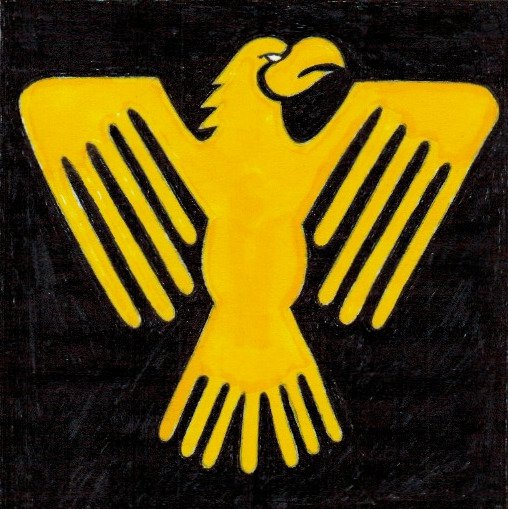 Gamaal Empire
Gamaal Empire
Though it splintered more than three hundred years ago, the very name of the Gamaal Empire (gamal) strikes fear in the hearts of civilized people to this very day. The forebears of today’s Nawabe, Maal, Dalgar, and Bowok cultures, the Gamaal themselves were descendants of the Nezplat mound-builders.
When the time of the Ravaging came, at least half of the Nezplat tribes took shelter in the hills and mountains as open territory was overrun by the Profane. Alongside them were refugees from the Hamor, as well as hill dwarves, orcs, and goliaths. What emerged after the Ravaging was the blended Mena culture. But the other half of the Nezplat never left the plains. The majority were slain by demons, but the rest somehow survived. Accounts of the centuries they spent in caves and dugout homes vary wildly; some speak of starving and sweltering in low huts made of the dung of aurochs while others claim to have fought the demons. Either way, they were shaped by suffering, survival, and toughness.
At first their efforts were focused on driving out the remaining Profane and recapturing the wide plains of central Odo Kas. The names of the clans are forgotten, but for a time these post-Nezplat were a divided folk, content to range the plains where their ancestors had constructed the eldritch burial mounds that were the only things the Profane had left untouched.
The Emergence of the Gamaal
That all changed with the appearance of Khaivor Tarkhai (kaivor tarkai) the Uniter, known as Twisted Beard. Tarkhai’s childhood is obscure, but he emerged from a clan in the central plains called the Gamaal. By all accounts a charismatic and inspiring leader, Twisted Beard set about unifying the Nezplat. The hagiography is that he bonded together all the nomadic people into a terrifying whole. The reality is bloodier: many clans did not jump behind this new self-proclaimed lord of all, and wound up falling to the spears and arrows of the nascent empire.
Like all the plains people, the Gamaal were nomadic. Entire tent cities were moved by wagon and pony: some tales mention trained aurochs as well, but such stories are likely embellishments. The ability to have moveable fortresses proved critical to the Gamaal war machine, allowing them to have cover even when approaching enemy cities. The same reliance on wheeled vehicles also hampered their ability to cross into mountains or ford wide rivers, often limiting their expansion at such natural boundaries. Gamaal ponies were generally too small to be effective mounts in battle, though light scouts relied on them for mobility.
The Gamaal also adopted the Urek language and writing, helping to unite their culture. But the crucial difference between the Gamaal and their enemies was far less mundane: a series of powerful magi emerged during the years of the Empire, often turning the tide of major battles. Sutionien’s rain of fire at the Battle of Volna River is perhaps the most famous in a series of victories led by arcane forces.
By 190 PS the Gamaal had been unified and begun turning their sight outward, toward the seas to the north and south. They pushed the orcs into Akkur Mons and Iza Mula and captured the Oppa coastal lands south of Iza Mula, burning their city of Kiragal and all the boats in its harbor. They then took the northern Urek city of Tenocmal and continued their advance south to Saffa. In 151 PS, the Gamaal attacked Skandara. The strategy and bravery of Whiro and his knights outmatched the Gamaal. Whiro himself struck Khaivor Tarkhai down.
Later history
While their expansion was bloody, the Gamaal brought with them a lasting stability, establishing ongoing trade from the Akkur Mons to the eastern coast of Odo Kas for the first time.
The Gamaal thirst for conquest was part of their undoing. Even before the Battle of Skandara they had been stretched thin, and the Urek army thinned it further. At the same time, the Hollow Mage emerged among the Oppans in the north, turning the tide in a series of battles along that front.
The infighting between his generals — and sons — over how to face these new challenges led Khaivor Bayan the Final to split his inheritance three ways. His sons inherited the Bowok, Maal, and Nawabe kingdoms, and the period of the Gamaal was done at last.
↞ Previous: Urek Empire Next: Irix Candelabrum ↠